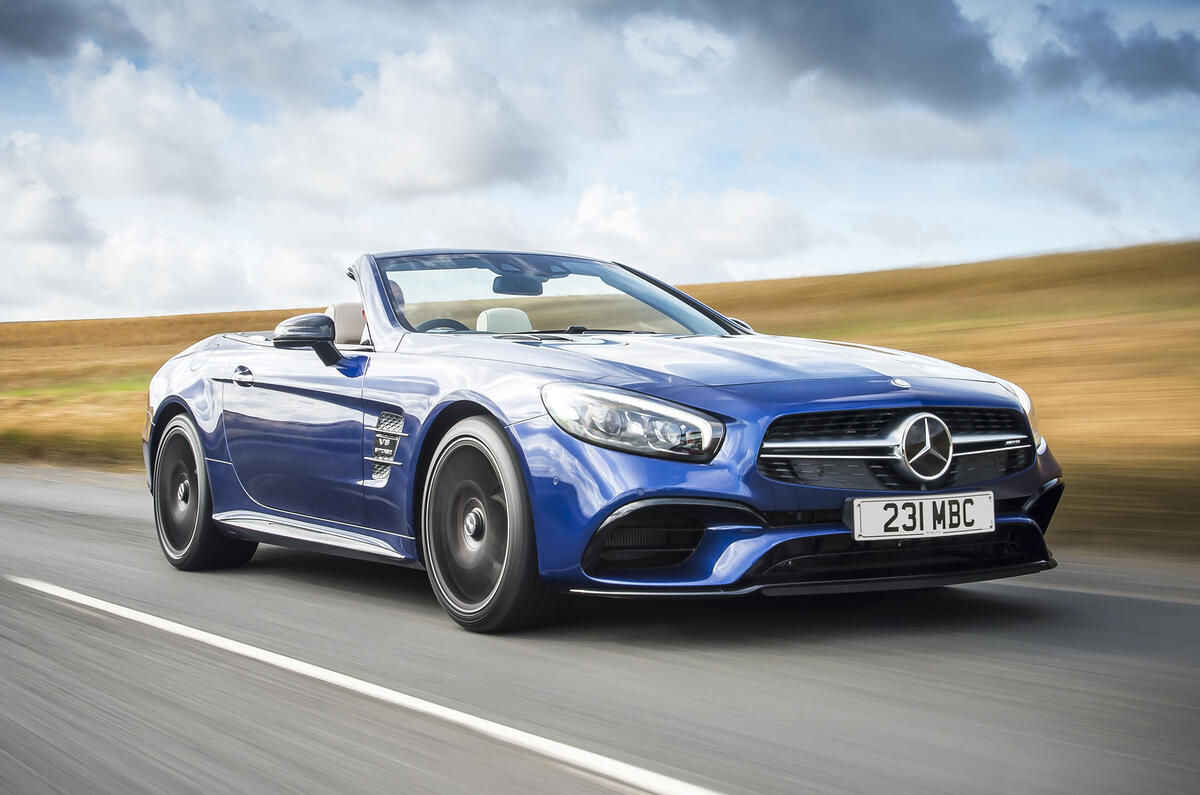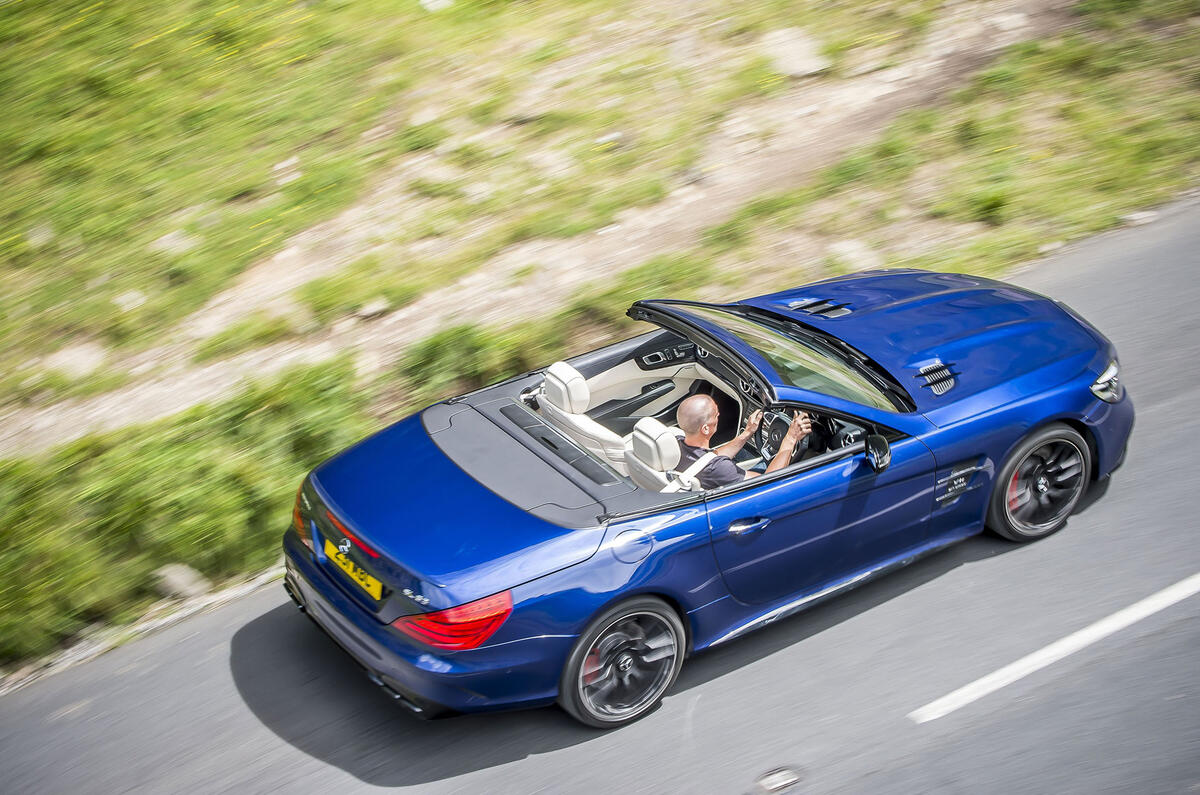You’d think that a car like the Mercedes-AMG SL 63 would barely register a sideways glance in a place like St Tropez.
But as we rumble around the Mediterranean playground of the rich and famous after a memorable couple of hours on the surrounding country roads, it becomes obvious very quickly that our shiny example is causing quite a stir.
Perhaps it is the new roadster’s appearance. Distinctive if not exactly possessing the elegance of some performance-orientated open-top rivals, the second-generation SL 63 looks like it means business. In 2016, the SL 63 and 65 was given a mild facelift, which saw some fettling done to the bodywork, but saw Mercedes-AMG resist the temptation to fettle under the bonnet.
Still, I can’t help feel that Mercedes has missed an opportunity with the styling of this car, especially the headlamps, which look comically large. They are the result, apparently, of a decision to provide them with all the very latest in lighting technology rather than any stylistic consideration.
However, it is the technology you can’t see that really advances the game. As with its standard sibling, this latest AMG model is based around a brand-new aluminium body structure that contributes to a 125kg reduction in weight over its steel-bodied predecessor when added equipment levels are taken into consideration.
Allied to a new twin-turbocharged 5.5-litre V8 petrol engine, the lightweight structure provides it with the potential for greater performance and added handling prowess.


































